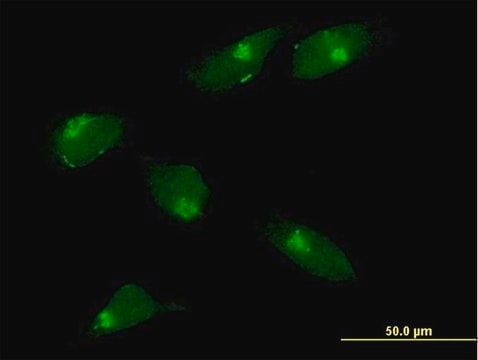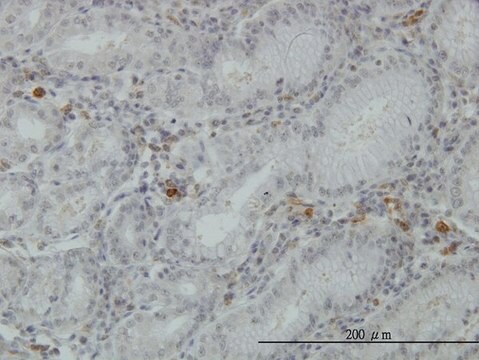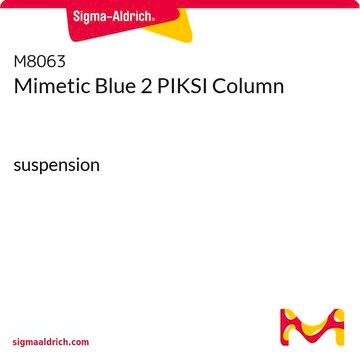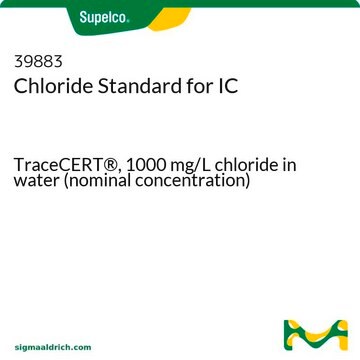일반 설명
We are committed to bringing you greener alternative products, which adhere to one or more of The 12 Principles of Green Chemistry.This antibody is Preservative-free, produced without the harm or sacrifice of animals and exceptionally stable to allow for ambient shipping and storage if needed and thus aligns with "Waste Prevention", "Designing Safer Chemicals" and "Design for Energy Efficiency".
Click here for more information.
ZooMAb® antibodies represent an entirely new generation of recombinant monoclonal antibodies. Each ZooMAb® antibody is manufactured using our proprietary recombinant expression system, purified to homogeneity, and precisely dispensed to produce robust and highly reproducible lot-to-lot consistency. Only top-performing clones are released for use by researchers. Each antibody is validated for high specificity and affinity across multiple applications, including its most commonly used application. ZooMAb® antibodies are reliably available and ready to ship when you need them.
특이성
Clone 1B14-H1 is a ZooMAb® rabbit recombinant monoclonal antibody that specifically detects LAG3. It targets an epitope within 16 amino acids from the extracellular domain from the N-terminal half.
면역원
KLH-conjugated linear peptide corresponding to 16 amino acids from the extracellular domain within the N-terminal half of human LAG3.
애플리케이션
Quality Control Testing
Evaluated by Western Blotting in Jurkat cell lysate.
Western Blotting Analysis: A 1:1,000 dilution of this antibody detected LAG3 in Jurkat cell lysate.
Tested Applications
Western Blotting Analysis: A 1:1,000 dilution from a representative lot detected LAG3 in Human tonsil tissue lysates and recombinant Mouse LAG3.
Flow Cytometry Analysis: 0.1 µg from a representative lot detected LAG3 in one million Human peripheral blood mononuclear cells (PBMC).
Immunohistochemistry (Paraffin) Analysis: A 1:100 dilution from a representative lot detected LAG3 in Human tonsil tissue sections.
Affinity Binding Assay: A representative lot of this antibody bound LAG3 peptide with a KD of 1.0 x 10-6 in an affinity binding assay.
Note: Actual optimal working dilutions must be determined by end user as specimens, and experimental conditions may vary with the end user.
표적 설명
Lymphocyte activation gene 3 protein (UniProt: P18627; also known as LAG-3, CD223) is encoded by the LAG3 (also known as FDC) gene (Gene ID: 3902) in human. LAG3 is a single-pass type I membrane glycoprotein that is synthesized with a signal peptide (aa 1-22), which is subsequently cleaved off to generate the mature form that contains an extracellular domain (aa 23-450), a transmembrane domain (aa 451-471), and a cytoplasmic domain (aa 472-525). It contains three Ig-like C2-type domains and one Ig-like V-type domain. LAG3 is primarily expressed in activated T-cells and in a subset of natural killer cells. Its expression is induced by IL-2, IL-7, and IL-12 on activated T-cells. Almost all CD4+ cells expressing LAG3 also Express™ CD25. However, only about 10% of CD4+ cells lacking LAG3 Express™ CD25. LAG3 serves as an inhibitory receptor on antigen activated T-cells and delivers inhibitory signals upon binding to ligands. Fibrinogen-like protein 1 (FGL1) is shown to be a major ligand for LAG3. LAG3 is reported to suppresses homeostasis proliferation (HP®) of CD4 and CD8 lymphocytes and some dendritic cell populations. Mice deficient in LAG3 display enhanced homeostasis proliferation (HP®). Following TCR engagement, it is shown to associate with CD3-TCR in the immunological synapse and directly inhibits T-cell activation. LAG3 can be proteolytically cleaved by ADAM10 and ADAM17 within the connecting peptide region to generate a secretory form (sLAG3). ADAM10 is reported to mediate constitutive cleavage, but cleavage increases following T-cell activation. On the other hand, cleavage by ADAM17 is induced by TCR signaling in a Protein Kinase C theta (PRKCQ)-dependent manner. This ZooMAb® recombinant monoclonal antibody, generated by our propriety technology, offers significantly enhanced specificity, Affinity™, reproducibility, and stability over conventional monoclonals. (Ref.: Scurr, M., et al. (2014). Mucosal Immunol. 7(2); 428-439; Goldberg, MV., and Drake, CG (2011). Curr. Top. Microbiol. Immunol. 344; 269-278).
물리적 형태
Purified recombinant rabbit monoclonal antibody IgG, lyophilized in PBS, 5% Trehalose, normal appearance a coarse or translucent resin. The PBS/trehalose components in the ZooMAb formulation can have the appearance of a semi-solid (bead like gel) after lyophilization. This is a normal phenomenon. Please follow the recommended reconstitution procedure in the data sheet to dissolve the semi-solid, bead-like, gel-appearing material. The resulting antibody solution is completely stable and functional as proven by full functional testing. Contains no biocide or preservatives, such as azide, or any animal by-products. Larger pack sizes provided as multiples of 25 µL.
재구성
300 µg/mL after reconstitution at 25 µL per vial. Please refer to guidance on suggested starting dilutions and/or titers per application and sample type.
저장 및 안정성
Recommend storage of lyophilized product at 2-8°C; Before reconstitution, micro-centrifuge vials briefly to spin down material to bottom of the vial; Reconstitute each vial by adding 25 µL of filtered lab grade water or PBS; Reconstituted antibodies can be stored at 2-8°C, or -20°C for long term storage. Avoid repeated freeze-thaws.
기타 정보
Concentration: Please refer to the Certificate of Analysis for the lot-specific concentration.
법적 정보
Affinity is a trademark of Mine Safety Appliances Co.
Express is a trademark of Merck KGaA, Darmstadt, Germany
HP is a registered trademark of Hewlett-Packard Corp.
ZooMAb is a registered trademark of Merck KGaA, Darmstadt, Germany
면책조항
Unless otherwise stated in our catalog or other company documentation accompanying the product(s), our products are intended for research use only and are not to be used for any other purpose, which includes but is not limited to, unauthorized commercial uses, in vitro diagnostic uses, ex vivo or in vivo therapeutic uses or any type of consumption or application to humans or animals.


